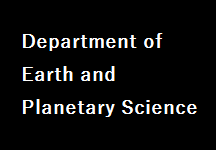






Space and Planetary Science Group
Outline of Space and Planetary Science Group
This group will study the planets, their interiors, surfaces, atmospheres, and magnetospheres, the heliosphere, and space, aiming at a comprehensive understanding of elementary physical processes, structures, compositions, dynamics, and their mutual interactions. Numerical simulation, laboratory experiments, and analyses of extra-terrestrial materials such as meteorites, as well as in situ observations on balloons, sounding rockets, and spacecraft will be conducted. Since "Space and Planetary Science" encompasses a variety of fields in scope, it is of course impossible to cover all the subjects only by the internal members of the group. Close collaborations with the members of the other groups in the Department of Earth and Planetary Sciences as well as in the Institute of Space and Astronautical Science will be conducted in various levels and scales (among individual researchers, among research groups, and also in educational plans for graduate students).
This group consists of five subgroups, "Space Physics", "Magnetospheric Physics", "Observational Planetology", "Comparative Planetology", and "Planetary Material Science"". It is noted that there are varieties of research status in different disciplines covered by these five subgroups: With Japanese successful spacecraft projects, "Akebono" and "Geotail", studies in the relating subgroups (Space Physics and Magnetospheric Physics) are at the top level in the international research community. A remarkable achievement has also been made in the field of isotopic studies of meteorites using an ion microprobe and gas mass spectrometry. The research activities within the group which relate to planetary exploration, though being at the highest level in Japan, are on the developing stage in the international standard. As rapid progresses in the Japan's commitment on various planetary/lunar/asteroid scientific missions, we expect that these fields in Japan will certainly grow in coming years. Our members are taking important roles in these ongoing and future planetary missions.
Space Physics
This subgroup has made, and will continue its contribution to the studies of fundamental processes in space, such as plasma heating/acceleration and transport/mixing processes in various plasma environments including shock waves, current sheets, velocity shear layers, and plasma discontinuities. From the space plasma research over three decades, it has become clear that the solar system works as the primary plasma laboratory in which these various plasma processes can be studied with great generality: For example, the study of shock waves in the solar system has given far-reaching impacts on the understanding of the origin of cosmic ray particles, which is now believed to be attributable to supernova shocks. Studies of the present and primordial solar wind as well as its interaction with the planets and interstellar matter, having interdisciplinary research interest, are among the important subjects to be covered by this subgroup,
Magnetospheric Physics
This subgroup has the main research target in physical structures, interaction processes and dynamics of magnetospheres around compact celestial objects, such as the Earth, planets, comets, the Sun, and primordial stellar systems. One of the major physical processes, which has experienced enormous attention in magnetospheric physics community, is magnetic reconnection. Recent observations of solar flares as well as magnetospheric substorms have provided quantitative evidence for magnetic reconnection processes playing major roles in cosmic plasmas. While this subgroup has gotten scientific achievements so far mainly in traditional fields of magnetospheric research, such as the studies of reconnection, auroral substorms, magnetosphere-ionosphere coupling, it will also cover new research fields, such as studies of accretion disks and magnetohydrodynamic jet formation around proto-stars and various cosmic environments.
Observational Planetology
According to recent development of the space technology, both in-situ observations and the remote sensing of planets have become key tools to understand the formation and evolution of the solar system and its planets (atmospheres, crusts, and interiors). This subgroup conducts feasibility studies and mission design for planetary exploration, sensor development as well as data analyses and interpretations for such missions. The research activities of this subgroup are also going to cover observations of both external planetary and proto-planetary systems, which will be conducted under the close collaborations with astronomers and astrophysicists in other institutions (National Astronomical Observatory, for example).
Comparative Planetology
This subgroup conducts studies of the internal structures and surface features of various bodies in the solar system (Earth-like planets, Jovian-type planets, icy satellites, comets and asteroids), and physics of impacts among these bodies and associated crater formation processes. Other fields being covered by this subgroup are the origin of the solar system, atmospheres of terrestrial planets, surface geological features of terrestrial planets, origin of interplanetary, interstellar and ring dust, formation of Jovian planets, and evolution of asteroids. Studies of comets are also an important field shearing research interests with other subgroups. The members of this subgroup have also taken an initiative in the Japan's interplanetary dust exploration project.
Planetary Material Sciences
In order to understand the early history of the solar system, this subgroup conducts mineralogical, petrological, chemical and isotopic studies on various types of extra-terrestrial materials corresponding to different localities and different stages of the solar system evolution, such as primitive meteorites, differentiated meteorites, lunar and Martian meteorites, cosmic dusts, and so on. Techniques of micro-analyses using EPMA (electron-probe-micro-analyzer), SEM (scanning electron microscope), TEM (transmission electron microscope), SIMS (secondary ion mass spectrometer, or ion microprobe), and FT-IR/Laser-Raman spectroscopic methods have been and will continue to be essential to proceed these studies. The ion microprobe technique, which was recently introduced and developed by the members and has already borne fruitful results, will increase its importance both in elemental and isotopic studies of extra-terrestrial materials, such as studies of REE (rare-earth-elements), stable isotopes (e.g., oxygen), and radiogenic isotopes (e.g., chronology based on short-lived radionuclides).




